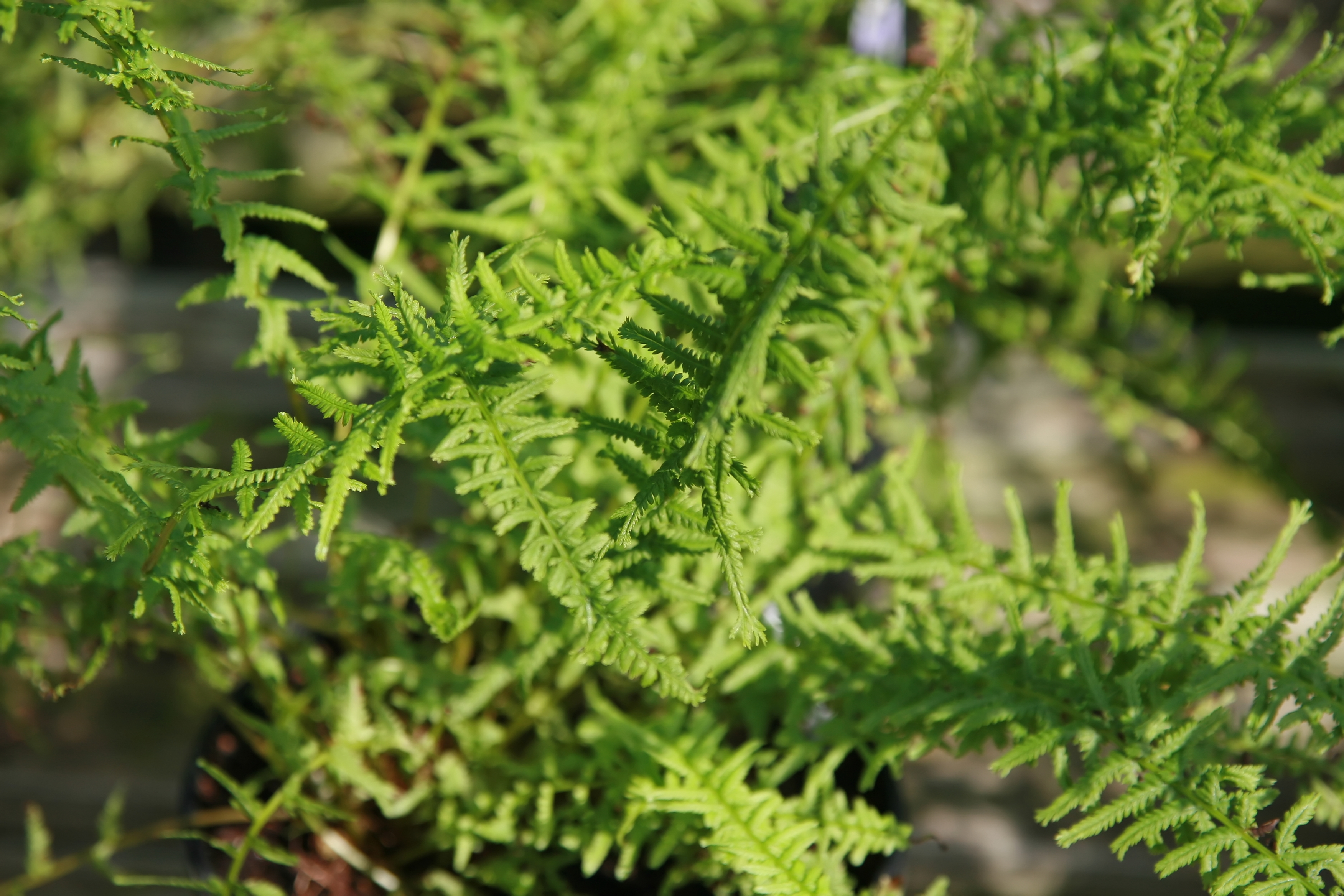General Description
Bloom Description: No flowers, the fronds are very unusual.
Growth Habit & Shape: A mid-sized, vase shaped fern that grows well in a variety of locations. This is a specimen fern, although it has an upright rhizome, it does not seem to form colonies as the straight species does.
Soil Preferences: Floodplain (river or stream floodplains), forest edges, forests, swamps, woodlands.
Root Description: The roots are an upright rhizome, meaning they form individual vase-shaped plants.
Garden Uses: This fern is interesting and makes a good specimen close to the edge of the bed or among shorter perennials. A. angustum 'Victoriae' is a smaller, fine textured plant that needs a section of the garden where it can stand out. The arching stems give it a nice form.
Best Management & Maintenance: Athyrium angustum is an easy to grow species, tolerating dappled shade to sun and various moisture levels. In sunnier spots it prefers moister soils. The root system of ferns is close to the surface so avoid trampling. This fern readily forms masses of individuals, sometimes fairly close together.
Common Problems: None.
Benefits
Ornamental Value: Distinctive foliage is the key element of this plant, making it a perfect specimen plant for the garden. It is easy to use because it tolerates a wide range of soil and light conditions.
Wildlife Benefits:
Other Practical/Environmental Benefits:
Use in place of: Japanese painted fern
Ecology
Habitat:
Floodplain (river or stream floodplains), forest edges, forests, swamps, woodlands
Response to Disturbance: This species is tolerant of a wide range of conditions and it will handle disturbance more readily than fern species that are typically found in deep woods settings. Does not respond well to trampling.
Native State Distributions:
Canada: Greenland; Man., N.B., Nfld., N.S., Ont., P.E.I., Que., Sask.
USA: CT, DE, IL, IN, IA, ME, MD, MA, MI, MN, MO, NE, NH, NJ, NY, NC, ND, OH, PA, RI, SD, VT, VA, WV, WI
Wetland indicator status: FAC
Companion Plants:
Tiarella cordifolia, Chrysogonum virginianum, Talictrum thalictroides, Anemone quinquefolia, A. cylindrica, Phlox stolonifera, Chamaepericlymenum canadense, Trillium sp.
References
Return to Top

